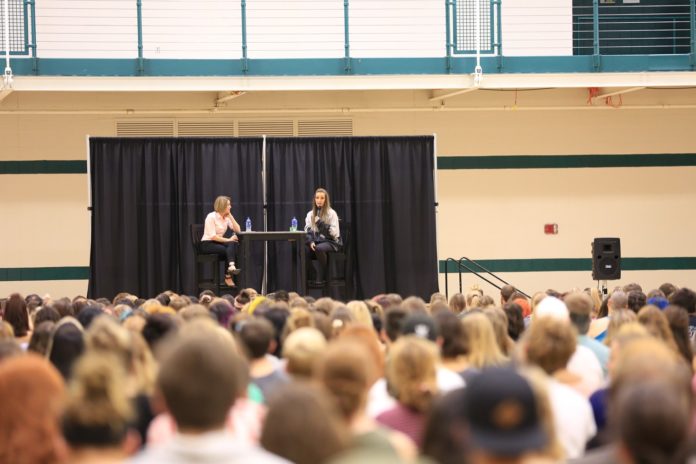University Program Board (UPB) at SRU has been operating for over 30 years. Their events are well-known around campus, like the recently postponed “A Conversation with Pete Davidson,” but the work that goes into each event is usually overlooked.
An important part of the process is the connections. UPB has long-standing relationships with professional agencies, and when new members are elected, senior members introduce them to the agents. These connections often follow long after graduation.
Amy Myers, director of speakers committee, took on the challenge of planning UPB’s first traditional event in two years. As a newer member, she has not experienced this process just yet.
Natalie Glenn, president of UPB, has experienced both traditional programming and coronavirus programming. During the pandemic, she said that Zoom fatigue was a challenge when planning events: people weren’t willing to get back on their computers after a day of virtual work.
“There’s been a transition between being able to have these concerts, being able to have these speakers, and then Zoom burnout fatigue,” Glenn said. “They don’t even want to get on their computers, because they were already on them all day.
“It’s been a very, very difficult transition.”
During the planning stage, it all starts with an idea. Members brainstorm during committee meetings: they begin with a buzzword, and members build on that buzzword until they have a plan for an event.
Non-UPB members with ideas can also contribute in two ways. First, they can join a committee. UPB is volunteer-based, meaning there is no time requirement. Second, they can come in during office hours and have a conversation about their ideas and how those can be realistically turned into an event.
University events are student-oriented, aiming to provide a takeaway and sometimes give mementos. Speakers and concerts aim to create memories. Not every speaker or performer will be accepted by every student, but the goal of UPB is to do what’s best for the whole campus community.
When it comes to organizing speeches and performances, UPB members start by finding out who is available to perform or speak. COVID-19 adds a unique challenge to this part of the process: many artists want required proof of vaccination or negative tests, and as a public university, SRU cannot require that.
Contracts are worked out between the artist and the organization, then a venue is chosen. For Pete Davidson’s event, for instance, the Robert N. Aebersold Student Recreation Center (ARC) was booked, but couldn’t be filled to capacity due to COVID-19 limitations. UPB communicated with the director of health and safety to work out an appropriate number of spots.
Next, they tackle tickets: how many to sell and who should be allowed to buy. The final part of the process is all about creativity and fun. This includes planning out questions for the speaker and what they might use to draw students in.
Since many students have not seen traditional programming, drawing them in is crucial. According to Myers, social media plays a big part in getting the word out about events. When “A Conversation with Pete Davidson” was announced, UPB’s like and follower counts skyrocketed.
UPB stated that there are currently no updates for “A Conversation with Pete Davidson,” and they are working to reschedule the event for later in the semester.
Many students have an immediate reaction to UPB announcements without taking into account the work involved.
“A lot of people don’t realize that we are a student-run organization. This is what we happen to be involved in on campus. So much goes into one single event, and understanding that we are just students putting this on . . . that’s a good thing to have in the back of their head,” Glenn said.








